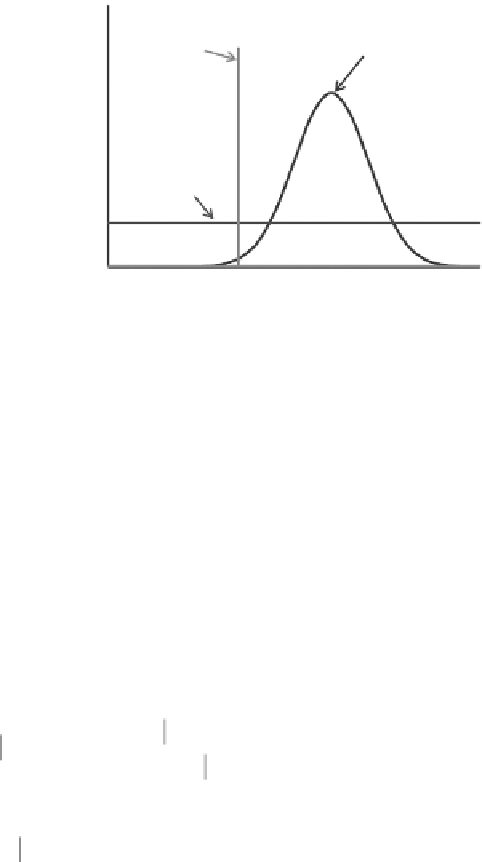Environmental Engineering Reference
In-Depth Information
Perfect
information
Maximum
likelihood
No
information
Decision consequence
Figure 13.11
Illustrative example showing that uncertainty can increase with additional information.
for all possible decision consequences is noninformative (
Figure 13.11
).
A likelihood func-
tion that has zero probabilities for all but one possible decision consequence is perfectly
informative (
Figure 13.11
).
In general, for a continuous likelihood function, a measure of its
mative.
*
The sharpness of the likelihood function is affected by attributes of the informa-
tion, such as the quantity of information (e.g., the number of measurements), relationships
between pieces of information (e.g., correlations between measurements), and the clarity of
the information (e.g., errors in measurements).
In general, the likelihood function is formulated in terms of variables (model parameters)
that affect the consequences of a decision, but not explicitly in terms of the consequences
themselves:
P
(
Εθ θΘ Θ
Εθ
= … …
= …
ε
,
,
)(,,
P
)
1
n
1
n
P
(,,
ΘΘ
…=
ε
)
∑
1
n
(13.9)
P
(
ε
,
,
θ
))( ,
P
ΘΘ
1
…
,
)
all
1
n
n
θ
,,
…
θ
1
n
where
P
1
… ε is the updated probability distribution for the set of model parameters
given the observed information, ε;
P
(,,
ΘΘ
)
n
(
Εθ
= …
ε
1
,
,
θ
)
is the likelihood function for the infor-
n
1
… is the prior probability distribu-
tion for the set of model parameters. The prior and posterior probabilities for each decision
consequence are then obtained from the Theorem of Total Probability:
mation in terms of the model parameters; and
P
(,,
ΘΘ
)
n
∑
all θ
PDecision Consequence
(
)
=
P Consequence
(
θ
,
…
,
θ
)
P
((,,
ΘΘ
1
…
)
(13.10)
1
n
n
,,
…
θ
1
n
and
*
It is sometimes convenient to work with the logarithm of the likelihood function due to its values ranging over
orders of magnitude and due to its exponential form with normally distributed data. Since the logarithm is a
single-valued increasing function of the argument, the maximum of the logarithm of the likelihood function
occurs at the same location as the maximum of the likelihood function and the curvature of the logarithm of
the likelihood function is as useful as the curvature of the likelihood function in indicating “informativeness.”





Search WWH ::

Custom Search